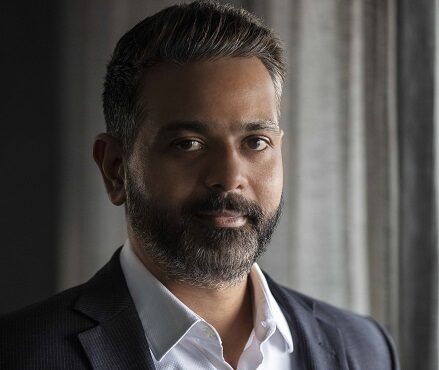
CXOToday has engaged in an exclusive interview with Rishubh Nayar, director of sales for India, Enterprise, Christie
- Can you provide an overview of Christie’s vision for the future of visual experiences?
At Christie, we envision a future where visual experiences transcend boundaries and captivate audiences in ways never seen before. Our commitment to innovation and cutting-edge technology positions us at the forefront of shaping the future of visual experiences. Central to our vision are the advancements in RGB pure laser projection and LED solutions, which play a pivotal role in transforming the way people perceive and interact with the world around them.
In India, our flagship 3DLP RGB pure laser projection systems, including the high-brightness Griffyn Series and M 4K RGB Series, have achieved significant success. These systems boast 4K resolution, cutting-edge electronics for ultra-fast processing, energy efficiency, and omnidirectional capabilities. Additionally, our direct view LED solutions, such as the award-winning MicroTiles LED, showcase the latest in LED display technology and advanced mechanical design, gaining substantial popularity in the Indian market.
Furthermore, our integrated solutions, spanning from Christie Spyder image processors and Christie Pandoras Box media playback and control systems to Christie Mystique automated camera-based alignment and recalibration solutions, have fortified our product lineup. This comprehensive range empowers us to offer complete, end-to-end solutions to meet the diverse needs of our valued customers.
- Can you share any exciting upcoming projects or initiatives that Christie is currently working on in the realm of visual experiences?
As a global visual and audio technologies company with decades of expertise in delivering unparalleled visual experiences, we have over 90% market share in India’s permanent projection mapping and museum sectors. Our projectors are the preferred choice for iconic venues like historical landmarks and cultural spaces, where projection mapping weaves artistic, promotional, and immersive narratives.
In recent years, our triumphs in the museum sector have reshaped visitor experiences. Our cutting-edge visual technologies have transformed exhibits in renowned institutions like the Smritivan Earthquake Museum, Dandi Kutir, and Virasat-e-Khalsa, setting new standards for engagement and interactivity.
Looking ahead, our momentum in delivering unique visual experiences continues with exciting projects on the horizon. These include projection mapping at Agra Fort in Uttar Pradesh, the Tiruvallur Statue, and Mahabalipuram in Tamil Nadu—just a glimpse of what Christie has in store for the future of visual excellence.
- Emerging technologies play a crucial role in shaping the future. How does Christie incorporate and leverage emerging technologies in its products and solutions for visual storytelling?
We recognize the transformative power of emerging technologies in shaping the future of visual storytelling. That is why our commitment to innovation is at the forefront of our product development strategy. With continuous improvements in AR, VR and holographic technologies, we strive to enhance our own visual and processing solution capabilities to enhance the immersive experience.
Our commitment to delivering superior visual experiences is evident in our emphasis on RGB pure laser illumination and direct view LED technologies. Additionally, the integration of advanced image processing and show control systems, facilitated by our Spyder and Pandoras Box family of products, empowers customers to create and deliver truly spectacular visual experiences.
As we look to the future, our R&D efforts are geared toward embracing the latest advancements in connectivity, interactivity, and sustainability. By staying at the forefront of technological evolution, we will ensure that our products not only meet but exceed the expectations of a dynamic and ever-evolving visual landscape.
- Are there specific emerging technologies that Christie is particularly excited about, and how might they influence the visual experiences landscape?
We have recently launched a new video wall processor, known as Christie Hedra, designed for control rooms, mission-critical operations, or monitoring feeds for broadcasts. This advanced processor offers secure, real-time data access, allowing users seamless collaboration and sharing of critical information for sound decision-making. With its distinctive feature set, including multi-view KVM, operators can flexibly arrange, view, and manage up to 27 inputs, sources, and streams with latency-free operation, adapting control room video walls to changing requirements and providing a tailored view of critical information.
Christie Hedra epitomizes our commitment to delivering awe-inspiring visual experiences through technological innovation. Representing significant advancements in our product line, it plays a crucial role in redefining and elevating the visual experience landscape for our users by meeting diverse needs.
- Are there specific regions or markets where the company sees significant potential for growth and impact?
India stands out as a high-potential market for us, particularly in projection mapping, museums, and the dynamic enterprise sector, presenting new opportunities. Promising regions for growth include Gujarat, Uttar Pradesh, and Madhya Pradesh, as well as vibrant cities like Hyderabad and Bangalore. The cultural richness of Gujarat, Uttar Pradesh, and Madhya Pradesh is likely to drive installations, emphasizing experiential spaces like museums and son et lumière. Hyderabad, a key hub for pharmaceuticals and tech start-ups, and Bangalore, the Silicon Valley of India, known for its IT and multinational companies, are poised for AV activities catering to corporate needs, including video conferencing and digital signage.
- Sustainability is an increasingly important factor in technological development. How does Christie approach sustainability and ethical considerations in the design and production of visual technologies?
At Christie, we are committed to being a globally responsible business, and environmental sustainability is an integral part of our organization. We see complying with international laws and regulations as the minimum acceptable standard and always look for ways to go further, incorporating sustainability into our practices and managing our environmental impact to help conserve energy and resources.
Right from the start—during the design phase of our AV products—we look for ways to extend life while reducing the total cost of ownership. Our centers of excellence for manufacturing in Canada and China are both ISO 9001:2015 Quality Management System-certified. This means that we have the framework to create quality products, and the tools to measure performance against established standards.
We adhere to and comply with RoHS Directive guidelines to ensure that no hazardous materials are in our products. In Europe, we partner with qualified electronic recycling centers across the continent, in compliance with the WEEE Directive, so that our customers can dispose of our projectors in an environmentally conscious manner. Using resources wisely, reducing waste, and increasing our efficiency all contribute to sustainability at Christie.
The Christie Griffyn 4K50-RGB pure laser projector is an example of a product that is designed with sustainability in mind. Even though it has a high brightness output of 50,000 lumens, it’s also the most energy-efficient laser projector available today in its class, generating an incredible 15.9 lumens per watt. Comparable projectors in the same class only deliver an average of 10 lumens per watt.
The reality is that in many regions of the world the power consumed by a projector can be the largest environmental contributor and the biggest total cost of ownership driver. By producing 50% more light for each watt-hour consumed, customers deploying Christie Griffyn 4K50-RGB projectors use 33% less power. This translates into a 33% smaller carbon footprint and 33% financial savings associated with electricity savings. This is why choosing Christie makes good sense and cents.
- Are there specific initiatives or practices in place to minimize the environmental impact of the company’s products?
We are of the view that achieving a sustainable future is possible by harnessing technology and responsible manufacturing practices. We have taken practical steps in terms of recycling, reducing the environmental impact, within our own facilities and working with suppliers that also follow sustainable initiatives and implement environmental management system activities to help conserve resources.
We have initiated a product packaging program to enhance recyclability and facilitate the identification of plastics for recycling purposes. Alongside this, we have also put in place “Eco Modes” on various projector models to reduce energy consumption. Additionally, we have adopted modular light engine designs across relevant platforms to enhance design flexibility and end-of-life optimization.
Our commitment to environmental responsibility extends in collaboration with our parent company, Ushio, fostering global environmental performance improvements. Monthly and annual environmental data from each company is consolidated into a comprehensive database, a practice we’ve upheld since 2009. This integrated approach ensures a cohesive and sustained effort toward environmental excellence.








